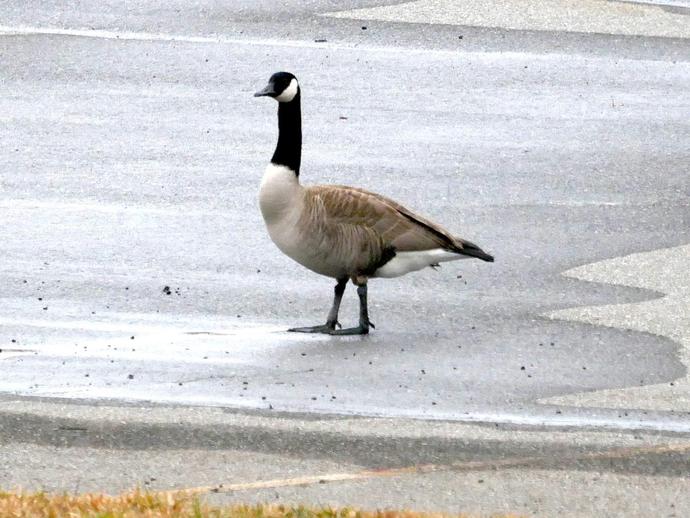February 16, 2021
Ben here with the Tuesday edition of #BenInNature presented by our friends at Carter Bank & Trust!
Here's a photo I snapped back in December when museum staff were conducting the 2020 Christmas Bird Count in Martinsville! The Canada goose (Branta canadensis) is both distinctive and common, making it a pretty easy bird to spot. Canada geese spend their summers in Canada and migrate to the U.S. for the winter, although there are plenty of places where they stick around year-round.
For many people in recent decades, Canada geese have become a bit of a pest. Anyone who lives near Canada geese will tell you that their droppings are a major nuisance, not to mention their loud honking and confrontational behavior. Part of the problem is that the kinds of spaces that humans enjoy are also perfect for Canada geese. What we see as a golf course, for example, a Canada goose sees as a nice open space with bodies of water, easy access to food sources (they mostly eat various grasses), and a lack of predators. You can't blame them for wanting to move in.
Canada geese are often spotted flying in a "V" formation, as are many other large migratory birds. The reason for this is energy efficiency; each bird flies in the "upwash" of the bird in front of it, which allows them to reduce drag and save a great deal of energy. In fact, one study found that the V formation allows migratory birds to increase their range by 71%! The effect is obviously lessened for the birds in the front, which is why the members of the flock trade places while migrating to better share the load. This principle doesn't just work for birds; military aircraft also fly in V formations to save fuel!
On a side note, I will share one of my favorite jokes. If you're ever out and about with a friend and see some birds flying overhead in a V formation, ask your friend if they know why one side of the V is longer than the other. When they say no, tell them, "Because there are more birds on that side." They will either laugh or never speak to you again, but either way, it's worth it.
ABOUT #BenInNature
Social distancing can be difficult, but it presents a great opportunity to become reacquainted with nature. In this series of posts, Administrator of Science Ben Williams ventures outdoors to record a snapshot of the unique sights that can be found in the natural world. New updates are posted Monday - Friday, with previous posts highlighted on the weekends. This series of posts is made possible thanks to the support of VMNH Corporate Partner Carter Bank & Trust (www.cbtcares.com)
NATURE PHOTO IDENTIFICATIONS
If you discover something in nature that you would like help identifying, be sure to message us right here on Facebook with a picture (please include location and date of picture) and we'll have our experts help you identify it!

 Hours & Admissions
Hours & Admissions Directions
Directions

